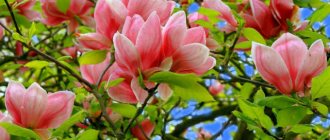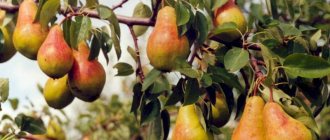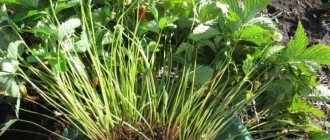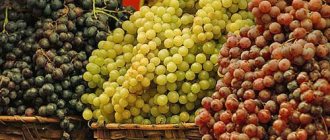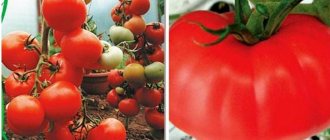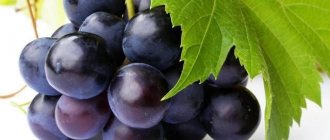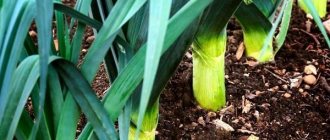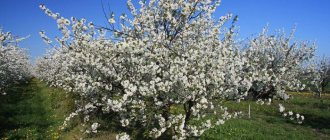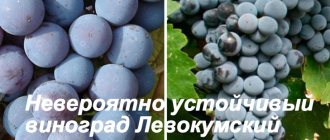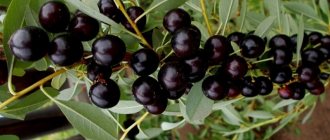Strawberries are considered one of the most commonly grown berries in summer cottages and garden plots. Caring for the crop is associated with difficulties in organizing space due to the long shoots of strawberries. Recently, summer residents have been giving preference to varieties of strawberries. They have high yields. This berry is great for eating fresh and preparing a variety of sweet desserts. Large-fruited strawberries are the most widespread in our country. In addition, when growing beardless varieties, there is no need for regular monitoring of the condition of the shoots. Breeders have developed many varieties of this popular berry. When choosing the most suitable ones for yourself, you can focus on the description of varietal characteristics. It wouldn’t hurt to look at a photo of the plant during the fruiting period in order to have at least a rough idea of the shape and size of the berries. When choosing a particular variety, it is very important to take into account its zoning for your area. After all, not only the survival rate of the crop and the overall development of the plant depend on this, but also the size of the berries, as well as the yield indicators of a particular variety in a given climatic zone. Today we will talk about varieties of large-fruited strawberries.
Features of beardless strawberries
Strawberries without whiskers are especially loved by gardeners, as they are remontant and bear fruit several times in one growing season. Caring for such varieties is much easier, because there is no need to periodically trim the shoots to prevent the crop from thickening and growing. In addition, garden strawberries can be planted more closely, which allows you to save space and place more bushes in one bed. The beardless berry can be either large or small in size.
Latest articles for gardeners, gardeners and flower growers
How to grow petunia from seeds at home for seedlings
Planting carrots in spring sowing when to sow how to plant correctly
Lunar calendar for April 2021 for gardeners and gardeners
Pruning an apple tree in spring for beginners in pictures step by step
Reproduction of varieties is carried out either with the help of seeds from which seedlings are grown, or by dividing the bush. The rest of the agricultural technology is completely the same as that used for varieties with a mustache. It is worth mentioning that day-neutral varieties are often classified as beardless. Their peculiarity is that under comfortable conditions, approximately 5 whiskers are formed on the strawberry, and in hot, dry weather they do not form at all.
Among those that have become popular in recent years are the following:
Reproduction
What points need to be taken into account in order to successfully grow such remontant strawberries? First, let's figure out how to get seedlings.
Beardless strawberries reproduce in two ways:
- sowing seeds,
- dividing the bush.
Sowing seeds
You can use store-bought seeds, or you can collect your own seeds in the summer, choosing the most productive plants and the largest and most ripe berries. The best results are obtained from seeds from berries collected in August. But, you shouldn’t take the early first berries.
There are two possible sowing options: early in the spring at home and in the summer in a greenhouse or even in open ground.
When sowing in spring, you need to start sowing seeds for seedlings in early March, then by spring good seedlings will have time to grow.
What we need for planting:
- seeds,
- seedling container,
- priming.
What to sow into. It is convenient to use small drawers measuring 30x40 cm and 8 cm high.
We prepare the soil with the following composition:
- 1 part fertile soil,
- 1 part peat
- 1 part sand.
We fill the box with the resulting substrate, level it, compact it and water it. The seeds of remontant strawberries are very small and we will not bury them in the soil, but scatter them evenly over the surface of the soil and sprinkle them with a layer of sand (1 mm). It is convenient to use a sieve. Cover the box with glass or film and keep it in a dark and warm place. Water by spraying with water from a spray bottle.
Shoots appear in about two weeks. Now you need to put the box in the light. After another week, the first true leaf grows. After 2-3 true leaves appear, the plants can be planted in separate pots. We take the same soil, and pour expanded clay or coarse sand, etc., onto the bottom for drainage. A few days before planting, seedlings can be disinfected after spilling with a light, warm solution of potassium permanganate.
In open ground, seedlings are planted at the end of May in beds prepared in advance. The soil is prepared as for ordinary garden strawberries.
It is convenient to cover the beds with black film or thick covering material. Then weeds don’t grow in the garden bed, moisture stays in the ground longer, and the berries don’t get dirty.
Dividing the bush
You can sow seeds, or you can take and divide a large bush. To do this, a two- to three-year-old plant is dug out of the ground and divided into separate bushes with part of the root using a sharp knife. Roots that are too long can be shortened to about 5 cm. The cuttings are cleared of old leaves and stems and planted in a new location.
It is better to divide the bushes in the spring, then the young plants have time to take root sufficiently over the summer.
Strawberry Coquette
Strawberry Coquette remontant large-fruited is the most popular variety. It gained its popularity due to its winter hardiness and long-term fruiting. This is a unique plant that has good properties.
A distinctive feature of this species is its abundant fruiting, incredibly sweet taste and aroma of berries. This is a large-fruited garden strawberry, which belongs to the beardless varieties. It grows in the form of small, lush bushes. On each of them, flower stalks are formed several times a season. Medium-sized inflorescences are semi-scattered. Each ripe fruit contains more than 65% vitamin C and up to 9% sugar. Strawberry Coquette is an early ripening variety, and the fruits of this plant have a cone-shaped shape. Ripe berries have a sweet and sour taste and rich aroma. With proper care, they can reach 25 grams.
A distinctive feature of this variety is the excellent taste of the berries. They can be consumed both raw and for making jam. The pulp is quite tender and very juicy. The berries are shiny, red in color. The main advantages of this variety: Due to the fact that the plant does not form tendrils, it can be grown in both large and small areas. The bushes lend themselves well to weeding. They are easy and quick to harvest. Berries are easy to transport to different distances. The plant tolerates severe frosts well and is not susceptible to various diseases.
Varieties in demand among gardeners
Choosing A big role is played by the exactingness of a certain variety to the attention of the gardener, how often he can feed the berry garden, loosen the soil, and irrigate the beds. Depending on taste preferences and the availability of time for care, gardeners identify a number of interesting varieties of berries. All of them are without mustaches.
"Ali Baba"
The result of the work of a Dutch breeder, which saw the light of day in 1996. The variety is represented by powerful, compact bushes about 15 cm high. In the first year, numerous inflorescences form on them. The berries, weighing 7 g, are covered with red skin, but the flesh is white. During the season, 500 fruits can be harvested from one plant. Although they are very tasty, they are not suitable for industrial production due to their poor shelf life and transportability.
"Renaissance"
A mid-early berry plant that has recently been added to the catalog of varieties. Brought out by German specialists in 2021. Plants are medium-sized with intense foliage. Spreading is weak. The flower stalks do not rise above the green leaf blades, but bend towards the ground.
The berries are heart-shaped. Aligned to size. The color of the thin skin is bright red. Due to the high concentration of aromatic substances, it has a very intense aroma, reminiscent of wild strawberries. The pulp is dense, the skin is medium elastic. Yellow achenes are sunk into the pulp.
"Cinderella"
Strongly growing and spreading bushes yield their harvest late (in July). But fruiting continues until frost. The bushes are formed by powerful shoots and large leaf plates, painted dark green. The peduncles are strong and can support the weight of fruits over 20 g. The arrangement of flowers is low.
If the average weight of berries is 20 g, then at the first harvest, larger specimens are also noted. The shape of the fruit is smoothly rounded, conical, without a neck. The pulp has a dense structure and a reddish color. The taste is bright with a sweet and sour aftertaste.
"Queen Elizabeth"
An early ripening day-neutral variety. On vigorous, semi-spreading specimens, erect flower stalks form early. When fully developed, they remain hidden under large foliage. The latter has characteristic jagged edges and a glossy sheen. The flowers are bisexual (without empty flowers), large, white, five-petaled or semi-double.
During the formation of the ovary, plants begin to actively waste energy, which negatively affects the formation of the ovary. This led to the classification of the variety as beardless. Productivity from an area of 1 m2 is 4.5 kg. Strawberries are resistant to the development of fungal diseases.
Attention! Under favorable weather conditions, it is possible to get the first harvest from the bushes in late spring.
"Forest Tale"
High-yielding dessert strawberries. It blooms early and enters the fruiting phase in early summer. Medium-height bushes reach a height of 20-25 cm. They are formed by rosettes of large, wrinkled leaves. Peduncles grow level with them. The type of development is bouquet. The bright red fruits are small. Weight - 4 g. But the small fruit does not affect the taste: it is amazing. The purpose is universal: suitable for both fresh consumption and canning.
Wima Rina's beardless strawberry
For arid areas, those varieties of remontant wild strawberries are suitable that respond well to the absence of watering for some time and continue to bear fruit. “Vima Rina” is just that option. In addition, this is a variety that produces large berries already at the end of June and is resistant to diseases and pests.
Most Read Reviews
Vermicompost for cucumber Grapes Isabella Grapes Muscat Grapes delight Gooseberry pests Pear early ripening Yellow cherries Seedlings of cucumbers turn yellow How to grow plums How to pollinate tomatoes How to water peppers How to plant a pear How to protect strawberries Calcium nitrate Strawberry Marmalade Strawberry Mashenka Strawberry Roxana Strawberry albion When strawberries bear fruit Raspberry hussar M Ulching cucumbers Mulching of tomatoes crumble berries why the tomatoes are withering why cucumbers disappear why the plum dries why the tomatoes are blackened by vaccination of grapes. Reproduction of lemon. Propagation of the rust of rust on cucumbers mesh for cucumbers. How much blooming lines of gooseberry varieties of sessions of the varieties honey than feed gooseberries than useful grapes black raspberries
Beardless strawberry Rügen
The variety of German selection, with almost a hundred years of history, is famous for its high productivity. A neat bush with abundant foliage, hung with berries until October, often becomes a decoration of the local area, located in flower beds or along paths. It can grow indoors without requiring additional lighting sources.
The Rügen variety is adapted to the conditions of the Moscow region. The plant demonstrates good disease resistance. Its small bright red oblong berries with dense yellowish pulp inside exude the aroma of wild strawberries and have a sweet, pleasant taste.
Fertilizer
Strawberries need nitrogen fertilizers. But if their number is excessive, then the bush will please its owners more with beautiful bright leaves than with berries. In this case, flower buds take longer to form.
Lack of nitrogen leads to slower growth of leaves, they become pale, and the number of flower stalks sharply decreases.
Nitrogen fertilizers are applied in two stages until flower stalks appear.
Then potassium-phosphorus fertilizers are applied. Ash can be a source of potassium. It is applied for irrigation or in wet weather, closer to winter. After all, potassium helps plants survive the winter without loss.
Remontant strawberries need boron to ensure continuous fruiting.
It can be fertilized using feritigation. This is the application of fertilizers during irrigation, along with water. This is facilitated by installing an irrigation system.
Ruyan's beardless strawberry
Among the best varieties of remontant strawberries, this variety is distinguished by its good tolerance of humid conditions when grown on drained soils. This is due to the plant’s resistance to gray rot and high shade tolerance. Considering these features, the crop can be planted under apple trees.
Latest articles for gardeners, gardeners and flower growers
Ammonia in the garden application for strawberries
Feeding tomato and pepper seedlings with folk remedies
Lunar sowing calendar for 2021 gardener table
Pruning raspberries in spring: how to do it correctly
Ruyan's beardless strawberry produces aromatic berries of dense consistency that rise above the foliage and are practically not contaminated by the soil. To obtain a good harvest, moisture deficiency must not be allowed. This will result in less flower buds being formed.
Growing and care
To grow remontant strawberries and get a harvest, you must follow the basic rules of maintenance:
- Strawberry bushes are arranged in rows, at a distance of 30-40 centimeters.
- For row width, a distance of 1.2 meters is sufficient.
- An important condition for growing is maintaining an average level of soil moisture.
- During the period of growth and bud setting, the soil is fertilized with ash or fed with nitrogen-containing complexes.
- Watering should be constant and moderate.
- To obtain additional oxygen from the root system, it is recommended to loosen the soil after each watering.
- Leaves on which redness appears are regularly removed along with the cuttings.
Strawberry Holiday
This beardless, remontant variety of small-fruited strawberries, Holiday, is remarkable for its yellow fruits, which are superior in taste to red-fruited strawberry varieties. The variety forms a compact bush up to 30 cm high; it can also be grown as an ornamental plant in hanging flower pots along garden paths. The berries are very tasty and aromatic, medium-sized egg-shaped. The variety is productive, frost-resistant, and can be grown in all regions of Russia that cultivate this crop.
Planting
The soil for strawberries is prepared in advance. Apply fertilizer and lime. Do not plant after tomatoes, eggplants, potatoes. Grows well after onions and carrots.
The recommended width of the beds is 1.2 m, in a row - 30 cm. The rows are located at a distance of 40 cm from each other. Next year the bushes will grow and cover almost the entire territory. They will be easy to care for.
Planted at a time when the sun does not hit the leaves. Add ash, superphosphate (1 tbsp) or one of the chemical fertilizers (according to the specified rate) to the wells. Sprinkle the fertilizer on the soil so that it does not burn the roots of the plant. Pour 1.5 liters of water and straighten the roots. Sprinkle with soil so that the growing point remains on top.
It takes a week for the bushes to adapt, but soon they begin to produce young leaves. In September they produce weak berries. This will allow the gardener to taste the variety. But the bush will produce its main harvest only from next year.
Each leaf lives for 2 months. Then it needs to be removed.
Reviews from gardeners do not advise doing this too early in the spring. Otherwise, young leaves may be damaged by spring frosts.
How to grow varieties of strawberries from seeds
Landing time. Strawberry seeds are usually planted in the second half of February (the period is indicated for the middle zone).
Latest articles for gardeners, gardeners and flower growers
Treating trees in the spring against pests and diseases
Pruning trees in spring for beginners in pictures step by step
Spring treatment of trees and shrubs against pests and diseases
Picking a tomato in April 2021 according to the lunar calendar
To grow strawberry seedlings, low (5–6 cm) but wide containers are used. It is convenient to use a ready-made plastic container with a lid. To remove excess water and improve air circulation, punctures are made in the bottom and lid.
Strawberry Tuscany
Ampelny
The variety is more decorative, beautiful pink flowers. Shoots reaching 1 meter in length, on which flowers and berries are located. I recommend it for planting in pots or cache-pots. The berries are quite sweet and dense. Blooms and bears fruit in the first year. The first flowers appear 14-15 weeks after planting, ripe berries - after 17-18 weeks.
If you liked the review, please like and subscribe to my channel.
Sources:
https://7ogorod.ru/plodovye-kusty/zemlanika-bezusaa-remontantnaa.html https://7dach.ru/SilVA/6-luchshih-remontantnyh-sortov-sadovoy-zemlyaniki-5774.html https://zen. yandex.ru/media/id/5a202a3d5a104f8c10d28485/5bdbdde4b327ef00a9372d2d
